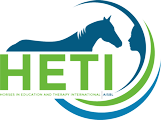Therapeutic Riding as a Model of Integrated Rehabilitation 2000
€5.00
| Author | Paola Allori, Anna Pasquinelli |
|---|---|
| Year | 2000 |
Disability is defined as the biological or functional element that determines an objective lack or loss of the specific resources which are necessary for adaptation and which are characteristic of the species, genre and age of the subject (Papini, 1996). According to the WHO definition, instead, handicap is the feature of the disability which involves personal identity as well as the family and the community. Since disability involves the lack or loss of the necessary tools of adaptation, it follows that any rehabilitation technique must help the disabled to regain these tools; at the same time, it must also prevent or remedy the transformation of a disability into a handicap. In order to reach these goals, it's necessary to establish a program of rehabilitation which must provide differentiated solutions for the subject on the basis of age, pathology, level of individual and social-family compliance. This can be achieved through various forms of rehabilitation (Papini, 1996; Pasquinelli and Papini, 1997):
- Technical Rehabilitation (Rl): the aim is to reduce, as much as possible, the disability to minimum degree through specific health-care techniques based on different principles and rehabilitative approaches;
- Social Rehabilitation (R2): the aim is to reduce specific problems deriving from the handicap and this is achieved by employing psychological and educational strategies which can help the disabled in their process of integration in the family, in school, in society and at work.

